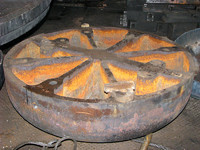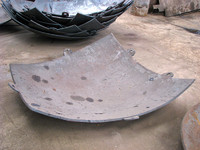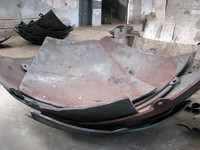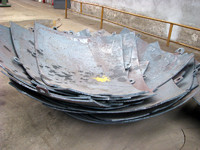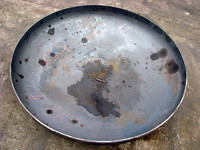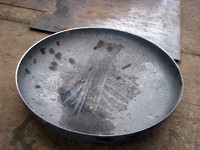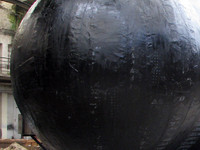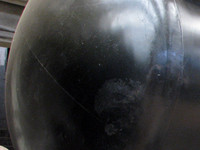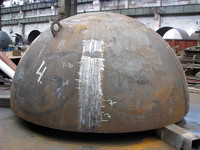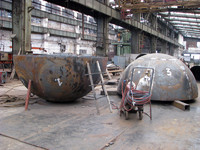Tank bottoms
Following up the development and production of tanks and pressure vessels, we have conquered the entire production of tank bottoms defined by the JUS standard. The material for tank bottom production depends on the user and we would like to point out that following materials could be used:
- Structural steel,
- Boiler and alloyed steel,
- Or materials agreed on, i.e. special materials as per the clients’ requests.
The tank bottom hot pressing production process ends up above AC3 point so that additional thermal processing is left out. In the case that the set temperature range has not been observed due to any reason whatsoever, the tank bottoms are normalised additionally. Attests on hot pressing and annealing are issued on special request. We manufacture the following tank bottom types:
- Shallow bottom JUS M.E0.020
- Deep bottom JUS M.E0.021
- Flat bottom JUS M.E0.022
- Semi-spherical bottom composed of segments
- Special bottom – as per special request of the buyer, i.e. client
Edges are treated in a standard way.
By the rule, the wall thickness is changed when tank bottoms are manufactured using hot pressing so that the thickness increases in a cylindrical part while the wall thickness decreases in a torus part within the (5%-10%) range, which depends on the bottom circumference and diameter, sheet metal thickness, cylindrical part height and tool condition. If the minimum bottom wall thickness has been pre-calculated, the bottom with the larger nominal wall thickness in order to satisfy the condition of the minimum wall thickness required with pre-calculation.
The tank bottom that is included in our product range is manufactured out of one sheet metal plate, without welded joints, whenever possible, depending on a plate size. In other cases, the sheet metal pieces are welded. In ordinary deliveries, the welded joint coefficient makes H=0.8, without additional radiographic and operation testing. On special request, we are welding the pieces with the welding coefficients up to H=1 with testing that is specifically set in accordance with the needs and our capacities. When it comes to surface processing we can also conduct sanding, if necessary.
